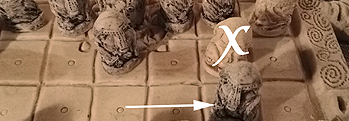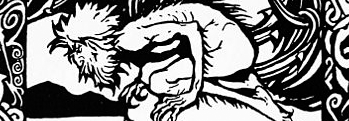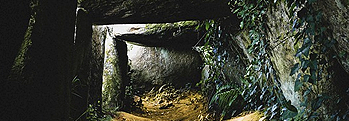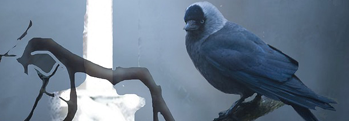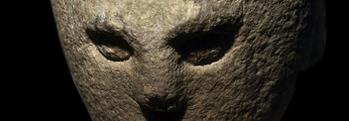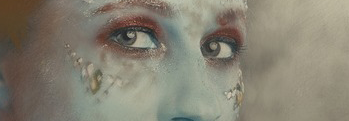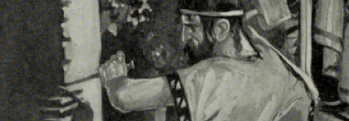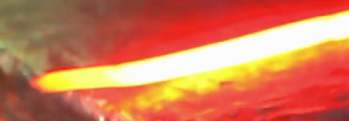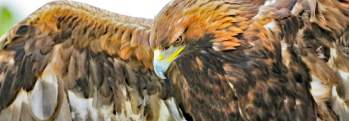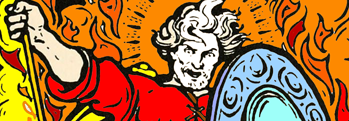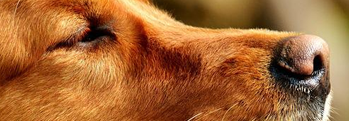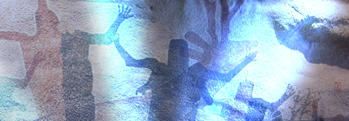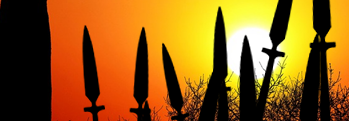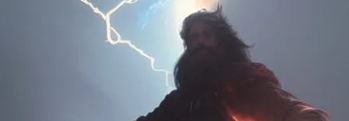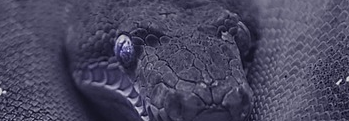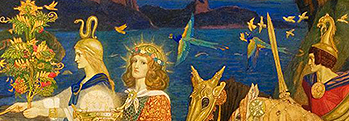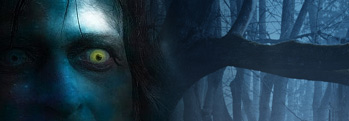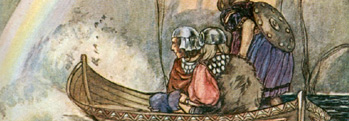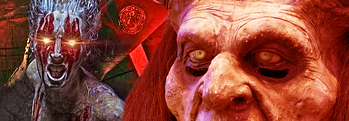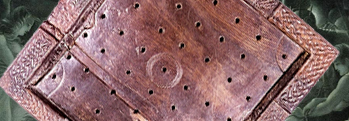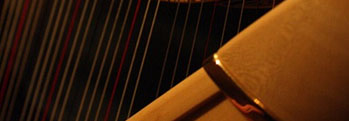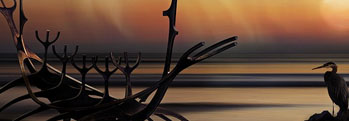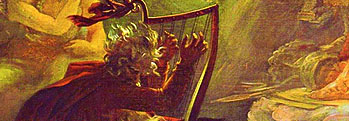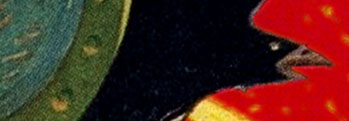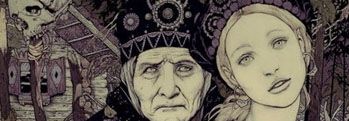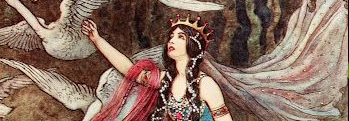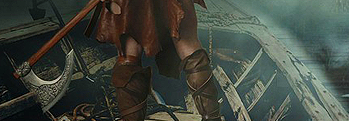Swords of Lightning and Spears of Fire
Irish and Celtic myths and legends, Irish folklore and Irish fairy tales from the Mythological Cycle
The fearsome weapons of the ancients
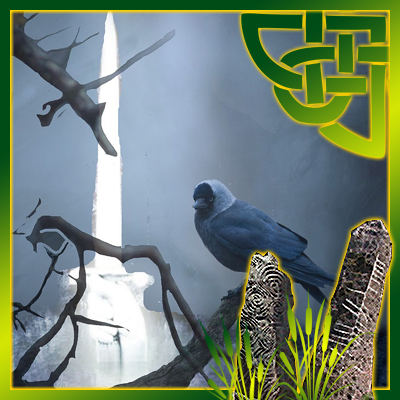 Of great renown are the feats and deeds of the ancient heroes of Ireland, and still to this day they echo through our legends where such tales are told. But of scarce less fame were the weapons they bore, implements of glory and terror, bound to ancient spirits and clasping lightning within their shimmering length, wielded with scarcely imaginable skill against foes supernatural and mundane.
Of great renown are the feats and deeds of the ancient heroes of Ireland, and still to this day they echo through our legends where such tales are told. But of scarce less fame were the weapons they bore, implements of glory and terror, bound to ancient spirits and clasping lightning within their shimmering length, wielded with scarcely imaginable skill against foes supernatural and mundane.
A whole book could be written about each, in their making, shaping, and use!
Not least of these legendary artifacts was Nuada Silverhand’s sword of light, the first weapon of the first Lord of the Tuatha Dé Danann, the Claimh Solas! Also called Nuada’s torch, once unsheathed all who stood against it were slain. This came from the sorcerous city of Findias, one of the four great treasures and jewels of the Dé Danann.
Throughout Irish mythology can be found many swords of light, although it is not known whether they bore a relationship to Nuada’s sword, or whether they were different in nature. The Claimh Solas was said to have fallen whole into the abyss of the underworld after Nuada thrust it into the breast of the harvester of souls, who had been summoned to collect the were-price in souls for the enemies of the Tuatha.
Perhaps the closest weapon to the sword of light, or even its descendant, was the Cruaidín Catutchenn, or the Hard-Headed Steeling, borne by Cú Chulainn, which might be fitting given that he was said to have been related by blood to Lugh and Nuada. It was known to have a hilt of gold and a belt of silver, and the blade shone at night like a candle.
It could shave a man’s head of hair with a single stroke, or cut a person in half without either half knowing what had happened!
Connected again to this lightning sword by name if not nature was the Caladbolg, or Hard Denter. Its name may also have meant hard stomach or hard cleft. The King of Ulster before he gave up his throne to Conchobar, Fergus MacRoth it was who used Hard Denter in battle. He was reputed to have cut the tops clean off of three hills in Meath with his sword. It may well be that stories of the infamous Excalibur were inspired by tales of this weapon.
After Fergus, Conchobar raised the Gorm Glas or Blue Green in battle. The colour green is usually a reference to a bronze sword and so seems a little out of place in the iron age, but when it was passed to his son Fiachra it served well enough! That is until he was beaten in battle by the son of Fergus who was using Hard Denter, and Fiachra’s brain was shaped into a sling-ball which eventually ended up killing his father.
The Tuatha had other fearsome eldritch weapons too of course, especially their Sea-Lord, Manannán Mac Lír. His favourite was Freagarach, which means “the answerer” or “the responder”. He gifted the sword to King Lugh when he left the land of those who live, or Tír na mBeo, along with various other supernatural boons.
Freagarach was sharp enough to cut sunlight into rainbows, and so made short work of any armour it faced, and every wound it dealt was mortal. It survived for thousands of years until the days of Fionn and his warrior band, the Fianna, when it was kept in a druidic crane-skin bag, which remained empty until high tide, and only then could it be opened.
Another of Manannán’s strange weapons was Díoltach, whose name meant “retaliator”. It was so sharp it cut the heads off three brothers with one stroke.
As well as the Answerer and Retaliator, Manannán had two more swords called Fraoch Mór and Fraoch Beag, which mean Great Fury and Little Fury. These two he used with surpassing skill, long knife in one hand and long sword in the other. They also survived to the time of the Fianna when Diarmuid ran off with Fionn’s betrothed, and was eventually gored to death by an enchanted boar that was actually his step-brother, but Little Fury broke on the boar’s back.
Fionn himself used a bitter blade whose name was Mac An Lúin, or “son of the spear”, and feared it was by his enemies! For it never needed to cut twice and killed with each stroke, so it was only used when the danger was greatest.
Speaking of enemies, the arch rivals of the Tuatha, the Fomors, were no slouches when it came to magical weapons! For their sorcery from the dark times before the cleansing waters rose had instructed them in the art of binding demonic entities to swords, the better to thirst for blood, and just such a weapon was Orna, or Little Pale Green.
The hand of Tethra, Fomorian King first warmed the hilt of Orna, and when the weapon was drawn it could speak and recount its deeds in a strange voice. After the second battle of Moy Tura, the blade was picked up by Ogma who first wrote Ogham letters, and he listened to the sword sing its works, while its master’s spirit descended to the otherworld where his reward awaited.
As Whitley Stokes wrote in 1891
“Then the sword [Orna] related whatsoever had been done by it; for it was the custom of swords at that time, when unsheathed, to set forth the deeds that had been done by them. And therefore swords are entitled to the tribute of cleansing them after they have been unsheathed. Hence, also, charms are preserved in swords thenceforward. Now the reason why demons used to speak from weapons at that time was because weapons were worshipped by human beings at that epoch, and the weapons were among the safeguards of that time.”
And not alone were swords given the benefit of enchantment by the ancient Irish! For did not Lugh himself have a battle-spear called the Gae-Assail, which meant the lightning spear. From lost Gorias, city of the blind wizards, was brought the Gae Assail, and no battle was ever won against it or him who held it in his hand. It was used by Lugh in the second battle of Moy Tura, for which he became known as Lugh Lamhfada, or Lugh of the Long Throw, it never missed its mark and it always returned to the hand of the thrower.
Many speculate this to be the origin of the “spear of destiny” used to pierce the side of Christ and sought after by none other than the Third Reich, and its story is a dark one, marked by greed and lust for power, with wars starting wherever it lay.
Perhaps related to the lightning spear was Lúin, found on the battlefield after the second battle of Moy Tura, from where it descended to a tall grey warrior called Celtchar in the time of Cú Chulainn. Like a vicious serpent, when the spear tasted the blood of an enemy it writhed and twisted. If no blood were tasted, it had to be quenched in a cauldron of venom.
If it were not so calmed, it would burst into flame and turn on its owner! Which is what happened to Celtchar, when a drop of venom from the spear tip accidentally dripped onto his flesh.
Another venomous spear was that given to the Irish hero Fionn Mac Cumhaill by the druid-knight Fiacha to defeat an evil monster who lived every day of the year but one in the deep, cold, unrippling pools of the otherworld. But on Samhain, when the world grew thin and the space between spaces fattened, the monster crept forth and sent the royal fortress of Tara to sleep with hypnotic suantraí music, before setting the place on fire with its breath!
Fiacha taught Fionn the secret ways of the spear called Birgha, the spit-spear.
“When you will hear the music of the Sidhe, let you strip the covering off the head of the spear and put it to your forehead, and the power of the spear will not let sleep come upon you.”
So Fionn did just that, and when the monster came, he inhaled the livening fumes from the spear and stayed awake when all others failed and fell, slaying the monster with a single cast of the weapon.
Never one to be caught short of weapons, Manannán also had a two-pronged red spear called Gae-Rua or the “red javelin” from which nothing could escape once pierced. This also wound up in the hands of Diarmuid, but again, was of no avail against the mighty boar he faced!
“Then Diarmuid put his small white-coloured ruddy-nailed finger into the silken string of the Ga buidhe, and made a careful cast at the pig, so that he smote him in the fair middle of his face and of his forehead; nevertheless he cut not a single bristle upon him, nor did he give him wound or scratch. Diarmuid’s courage was lessened at that…”
Cú Chulainn was another formidably armed hero, and he carried with him many spears in his chariot. Cletiné or the “little spear” was one, a dancing weapon he used to win many fights. Queen Medb fancied it for herself so she sent a bard to ask it from him under the guise of a bard’s price. This meant it was taboo to refuse the request of a poet.
Cú Chulainn was enraged at the temerity so he agreed to hand over the spear, but he did so in a more direct manner than might be expected!
“Thereupon Cú Chulainn hurled the spearlet at him, so that it struck him in the nape of the neck and fell out through his mouth on the ground. And the only words Redg uttered were these, ‘This precious gift is readily ours,’ and his soul separated from his body at the ford.”
Taking the broken copper tip of the spear from the top of it, Cú Chulainn tossed it into a nearby stream, which became known as Uman-Sruth, or the Copper Stream.
Even the goad he used to drive the horses before his chariot was a formidable implement in the hands of this masterful warrior, or as it was more properly known, the Del Chliss. He used it to kill the three eldritch sons of Nechtan Scéne, then riding away from their fortress with their heads hanging from his chariot.
But most fearsome and notorious of all was the Gae Bolg, or belly spear. This was given to Cú Chulainn by the warrior-witch Scáthach who taught him many strange war magics in Alba, including how to throw this spear using his toes.
It had been made from the twisted and ever-living tail of a sea monster that had died battling another beast from the fathomless deeps, and it stayed dry and creaking until dampened, then it swelled up and flexed, moving and rattling of its own accord.
Once it had thrust into another’s belly, it made but a single wound, but the barbs and venomous spines opened and filled every part of the victim’s body, some say drawing their vital fluids out through the spear itself. It was said to be impossible to remove without cutting around the flesh itself.
Is it any wonder his foes fled when they so much as heard of this frightful creation being used in battle!
Similar weapons were recorded among the Celts by the Greek Posidonius, who wrote that
“Some of their javelins are forged with a straight head, while some are spiral with breaks throughout their entire length so that the blow not only cuts but tears the flesh, and the recovery of the spear tears open the wound.”
Being honest, I’d probably take to my heels with a will if I saw someone coming at me with something like that!
More Stories from the Mythological Cycle
We are delighted to be able to present to you the rules of Fidchell, the Irish game of kings! This game can be purchased, but it's easy to get started and try it out for yourself. All you need is a 7 x 7 board, which can be squares or pins marked out - even on paper - 16 white or attacker pieces, a king piece, and 8 darker-coloured defender pie ... [more]
Times were hard in Ireland not so long ago, and harder yet they were before that – many’s the family was cast out of their houses for being unable to pay their rent! One such was poor Finian O’Toole, the kindly father of nine children who found himself evicted by the cruel English landlord in the parish of Kilmoe. Now it was th ... [more]
There is a tale, one of the oldest stories among the many very ancient stories of Ireland, of a man who returned to life as a man thousands of years after he first walked the earth. His legend was found in an eleventh century manuscript called Lebor na hUidre, which means The Book of Dun Cow, and it was written there by the followers of an early ... [more]
It’s a not uncommon belief that the women of Ireland in the ancient days were quiet and kept to themselves, letting the men do all the great deeds and win all the fame – but nothing could be further from the truth! From that day to this Irish women were and remain wild and fearless, willing to go to lengths as great as any man for victo ... [more]
Of great renown are the feats and deeds of the ancient heroes of Ireland, and still to this day they echo through our legends where such tales are told. But of scarce less fame were the weapons they bore, implements of glory and terror, bound to ancient spirits and clasping lightning within their shimmering length, wielded with scarcely imaginable ... [more]
The Tuatha De Danans By the force of potent spells and wicked magic, And conjurations horrible to hear, Could set the ministers of hell at work, And raise a slaughtered army from the earth, And make them live, and breathe, and fight again. So it was written in Keating's General History of Ireland, considered by many to be the definitive ... [more]
Her name was Clíona or Clíodhna and she was one of the most beautiful women of the Tuatha Dé Danann, that vanished sorcerous race whose legends echo still from one end of Ireland to the other. Some even say she was the most beautiful woman in the world, and she was worshipped as a goddess by the pagans of Ireland who followed t ... [more]
Many are the tales told of Lugh, the mightiest king of that ancient and mystical sorcerer race of Ireland, the Tuatha Dé Danann, but only one is told of his death. Now Lugh, lord of many warriors, had four wives, which back in those days wasn’t too unusual, and their names were Echtach, daughter of white-toothed Dagda, Englec, Ná ... [more]
Just as happens today, people in ancient Ireland had legal disputes and complaints they would bring before their courts, and the judge or king would try to make sense of what had happened and hand down a fair decision. But also just as happens today, there were situations where it was one person’s word against another, or there wasn’ ... [more]
The old stories of Ireland, some of the oldest in the world, tell of great ancients – almost immortals! – whose span of life stretched many thousands of years. Legends tell of their spirits passing from one body to the next, or upon occasion, staying in the one body for millennia, watching the tides of man and beast come and go. Such ... [more]
One of the chiefest and most powerful kings among the mystical Tuatha Dé Dannan was the one called Dagda, or Dagda Mór, which means “of shining skills”. He had other names too, such as Eochu the horseman, Ruad Rofhessa, lord of great knowledge, Dáire the fertile one and Aed, he of the fiery temper. Others yet called ... [more]
The Irish Brehon law codes are said to be the earliest fully developed legal system in Europe, but long before the Brehons were laid down there were earlier laws and all were subject to them, from the lowest to the highest! Women could hold their own property, were not themselves considered property, and could seek an education and improve their ... [more]
No tale of ancient Ireland could be complete without mentioning the Fomorians, dreaded foes of the Tuatha Dé Danann and all who came to conquer Ireland. The meaning of their name is debated even today, although most agree that the first part, fó, means “from below” or “nether” and the latter part means “t ... [more]
Many of the oldest records of Irish mythology and legend, which you might truthfully say are a history of prehistory, tell that the first people to arrive in Ireland were led by the lady Cessair when she fled to this land to escape the coming flood. The idols which had whispered through veils of midnight smoke that Ireland was a land untouched by p ... [more]
Throughout the old stories of Ireland are scattered mentions, and sometimes even descriptions, of some of the spells and rites used by both the Tuatha Dé Danann and those who came after them, the Gaels or Milesians, as they are sometimes known. Tales of these wondrous and mysterious feats of sorcerous skill may seem strange to us, but to the ... [more]
It was a warm and balmy summer's night, heavy with the fragrances of heather and honeysuckle, when Aengus, son of Dagda, awoke to find a beautiful young woman approaching him where he had slept. He was immediately taken with her grace and elegance, and his heart yearned for her, but when he tried to speak, she vanished! He stayed in his bed ... [more]
The river Barrow, like many rivers in Ireland, was given its name in ancient times. Few now know it once had another and very different name however, for it was when Dian Cécht walked the world, the healer of the Tuatha De Danann, that this river was first named! Dian Cécht, whose name meant swift power or swift potion, depending o ... [more]
A thousand years before the Olympic games were founded, the Tuatha De Dannan had arrived in Ireland and defeated the Fir Bolg, establishing their place on the Emerald Isle. The mighty queen Tailtiu had married Eochaid mac Eirc of the Fir Bolg, but he was killed during the invasion of Ireland by the Tuatha, so the leader of the invaders took her for ... [more]
In ancient times the Gaels would hold great festivals at different seasons of the year, such as the Tailteann Games, Tlachtga, Raigne and Lughnasadh, and it was at the beginning of August, every three years, that the festival of Carmun would be held during the festival of Lugh. Mighty were the celebrations held, with the racing of horses and the ... [more]
Long ago it was the time of the Tuatha De Danann in Ireland, and they were troubled by strife from beyond the Emerald Isle and within it. One of their mightiest warriors whose name was Lugh of the Long Hand heard that their demonic enemies from the sea, the Fomorians, had landed at Eas Dara, so he hopped up on Aonbharr, a horse which could gallop a ... [more]
Some of the most ancient Irish myths and legends tell of the Bocanachs and the Bananachs, known to the people of Ireland as fierce spirits of the air that were drawn to scenes of battle and bloodshed. Whenever armies gathered to test their might, the sky overhead would be filled with shrieking demons dancing to the sounds of swords clashing and blo ... [more]
Woven through many Irish stories, myths and legends is the ancient game of Fidchell, which means “wisdom of the wood”. It's said that it was invented by none other than Lugh of the Tuatha De Dannan, and predates chess by many centuries. Fidchell held a central role in the celebrations of Lugh, and at Samhain festivities as well, ... [more]
Well known is the ancient tale of the Children of Lir, and how two of the three of Bodb Dearg's daughters by Oilell of Aran married Lir to keep the peace in Ireland, between the rival chieftains of the Tuatha De Dannan. But less well known perhaps is the story of the daughter of the Bodb and one of her admirers, Cliach the Harpist. Cliach pl ... [more]
After the second battle of Moy Tura, Nuada the High King of the Tuatha De Danann was grievously injured, and as it was the law among their people that a king must be whole of body, Dagda Mór took his place. Mighty Dagda, of whom the ballads are sung, he was called the father of the Tuatha, the lord of knowledge, the many-skilled, th ... [more]
It is in the nature of fairytales and legends passed down from generation to generation that they might sometimes change and shift to fit the lives of the people of the time, and the more mysterious the figure the more legends accrue to it! And so it is with Donn of the Dead, king of the dead at the red tower of the dead, whose three sons cried &ld ... [more]
It was at the dawning of the world when the fair folk walked in broad daylight as bold as you and I, before the coming of the Milesians with their bitter iron blades and earthen ways, it was the time when magic was wrought and druidry had power, when heroes gave battle to gods and the titanic children of Seth still troubled the dreams of Heaven, it ... [more]
The raven has long been an omen of ill-tidings around the world, bearer of bad news and warnings, but in Ireland it was known once as a servant of the fairy Morrigan, or the raven was herself in person! She it was whose name meant the Great or Ghost Queen, from the old words for fear and greatness. Some will tell you earnestly that she was a god ... [more]
Long ago, in the time of the Tuatha Dé Dannan, one of their number became the high king of all Ireland, and his name was Eochaid Ollathair. He was a powerful magician of that sorcerous race, and by his workings he could change the weather and ensure the harvest was plentiful, as well as many other things. His wealth was vast and he was mu ... [more]
It was in the time of legends and heroes, when the Tuatha Dé Dannan had determined to go into their deep halls beneath the hills and mountains of Éireann the green, that the Dagda mór had fallen at the second battle of Moy Tura. With his slaying a new leader had to be elected and that was decided by the Tuatha to be the Red Cro ... [more]
And so it was when dragons still flew and champions walked the earth that the men of the Fir Bolg had lordship over all of Ireland. They had left Ireland centuries before due to the violence and heavy tribute demanded by the Fomorians, travelling far and wide until they came to the distant land of Greece. Although they made agreement and treaty ... [more]




